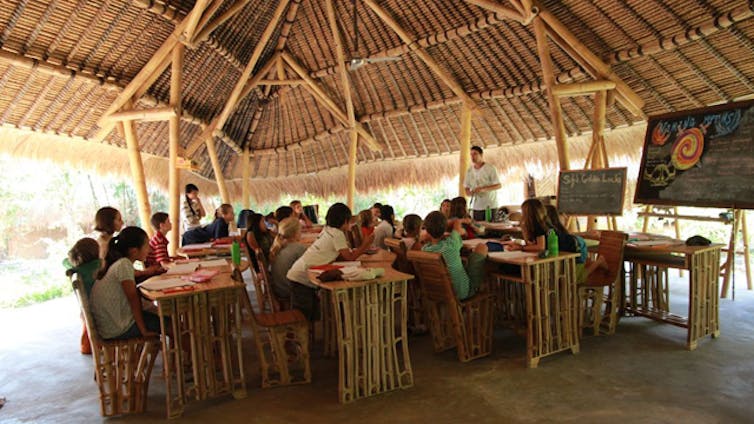
50 years ago, Marshall McLuhan the renowned philosopher of communication theory wrote about the role of mass media (the press, radio and TV) in education. He argued that it should be treated as an educational equal to the book and not dismissed, as teachers defending their role in the educational process would have it, as mere “entertainment”. People would be exposed to far more information through TV and radio than they would ever be in books read at school and so threatened to crack “the very walls of the classroom”.
McLuhan viewed the introduction of the printing press and the books that they produced as a form of mass media that enabled education on a mass scale even though reading is regarded as being exactly the opposite of this as an individual pursuit.
50 years on, and TV, radio and the press are an accepted source of content in the classroom. McLuhan’s writing pre-dates but also pre-empts the Internet as the newest form of mass media which itself went through a period of being dismissed as entertainment before being accepted by teachers and academics as an educational equivalent to the book. These days, one rarely hears criticism of Wikipedia being a reliable primary source of information anymore. Over time, it has withstood tests of its credibility, its strengths and limitations are understood and generally its authority has become accepted.
The walls of the classroom have so-far withstood the assaults brought on by classroom-liberating technologies like the Internet. In higher education, there is simply too much invested in heavily walled institutions that equate buildings on campus with the gravitas of learning. At the same time, there is an acceptance however that this is unsustainable model.
More to the point, it misses out on the opportunities offered by the “mass” and collective experience offered by an approach that emphasises not only classrooms without walls, but one without borders. These are characteristics supported by, but not usually emphasised in, Massive Open Online Courses (MOOCs). In part this is because the model of teaching implemented in the majority of MOOCs has mostly been about replicating the general model of teacher giving lectures and supplementing this with quizzes and tutorials. The forum does offer an opportunity for students to collaborate but this is more about problem solving and general discussion rather than necessarily promoting collaborative learning.
Taking a more active view of a classroom without borders means opening up the class to social, cultural and linguistic input from students and teachers at other institutions in other countries than your own. The immediate impact of doing this is to realise how narrow the focus is in classes that are only taught to a particular institution’s students. This ranges from a Princeton Introduction to Sociology class that after being run by as a MOOC caused the lecturer Mitch Duneir to realise how US focused the perspective of the course was. The eye-opening moment being when talking about the atrocities at Abu Ghraib he realised that this was focused solely on the experience of the US soldiers involved and their perspective as Americans. This was brought home to him when he realised that there were significant numbers of students from countries in that region and that their take on the incident was very different. Of the experience he said “I ended by thinking about how to bring the world back to the classroom in Princeton.”
Breaking the classroom walls also allows for collaboration. With research, collaboration between universities is taken as an essential element of producing high quality work. Some research is simply not possible without this level of collaboration because of the scale of the project, access to facilities and possibly most importantly, access to minds. In teaching, we have been slower to collaborate and is simply not facilitated by most institutions. There are obvious benefits to collaboration in teaching however and again technology is making this easier to do.
Guest lectures and even tutorials or discussions can be recorded using Skype or Google Hangout for example and watched live by students or at a later stage when viewing the recording. The collaboration could extend to sharing the teaching of classes across universities and even one university teaching a course at a second. Of course, this collaboration becomes even more beneficial when it spans borders and students are exposed to the different cultural and social elements as outlined previously, but enhanced by having academics and universities from these cultures contributing from within these different perspectives.
The timing is right for these changes. We have students who are adapted to using a global Internet and whose milieu is collaborative, multi-national and multi-cultural. The only aspect of their lives that isn’t is their schooling that is only now opening up with regular use of computers and the Internet. The same is true of their university that actively takes pride in the walls constraining their outlook and learning. The good news is that universities are beginning to recognize that the buildings are a liability and that they all have the potential to go beyond them.
